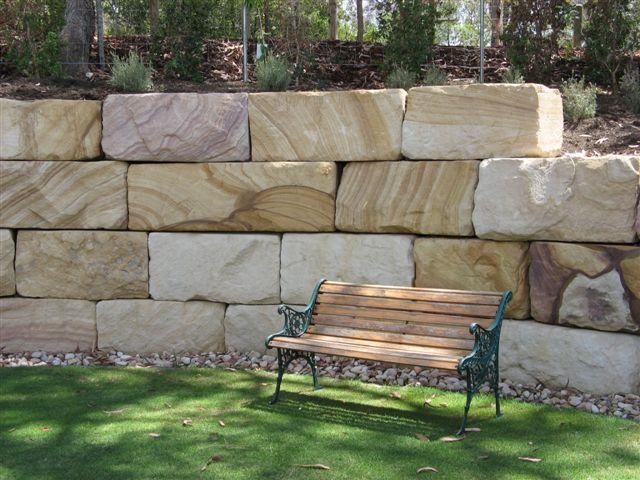In the realm of construction and landscaping, the materials you choose can dramatically influence both the aesthetic appeal and structural integrity of your project. One material that has stood the test of time is sandstone blocks. Known for their natural beauty, versatility, and durability, sandstone blocks have been a favored choice for architects and builders for centuries. In this guide, we will explore everything you need to know about sandstone blocks, their benefits, applications, and tips for selection to ensure your construction projects shine.
What Are Sandstone Blocks?
Sandstone is a sedimentary rock primarily composed of sand-sized mineral particles, primarily quartz or feldspar. These particles are cemented together by natural materials like silica, calcium carbonate, or iron oxide, giving sandstone its unique texture and appearance. Sandstone blocks are large, rectangular pieces of this rock, cut for various construction applications.
The visual appeal of sandstone is undeniable. Available in an array of colors ranging from light beige to deep red and golden hues, sandstone blocks can effortlessly blend into various landscapes and architectural styles. The natural texture of these blocks adds character and warmth, making them a preferred choice for both traditional and contemporary designs.
| Feature | Details |
|---|---|
| Composition | Sedimentary rock composed of sand-sized minerals. |
| Color Variations | Light tan, beige, gray, reddish-brown, gold, and more. |
| Texture | Grainy, with variations from rough to smooth. |
| Durability | Resistant to weathering and ideal for outdoor use. |
| Environmental Impact | Natural and eco-friendly, with a low environmental footprint. |
The Advantages of Using Sandstone Blocks
- Aesthetic Versatility
Sandstone blocks come in various colors and textures, allowing them to complement any design. Whether you’re aiming for a rustic feel in a garden or a sophisticated look for a building facade, sandstone can fit seamlessly into your vision. - Exceptional Durability
One of the standout features of sandstone is its resilience. Sandstone blocks can withstand harsh weather conditions, including heavy rain, extreme heat, and freezing temperatures. This durability makes them an ideal choice for outdoor applications, where longevity is essential. - Sustainability
In an age of increased environmental consciousness, sandstone is a sustainable choice. As a natural material, it requires less energy to produce compared to synthetic alternatives. Furthermore, its ability to be recycled and repurposed makes it an eco-friendly option for builders. - Ease of Workability
Sandstone is relatively easy to cut and shape, allowing for intricate designs and custom applications. This workability is particularly advantageous for artists and sculptors who wish to create detailed carvings or unique features in their projects. - Cost-Effectiveness
Compared to other natural stones, sandstone is often more affordable while still providing high quality and aesthetic appeal. This cost-effectiveness makes it an attractive option for both large-scale commercial projects and smaller residential endeavors.
Common Applications of Sandstone Blocks
| Application | Benefits |
|---|---|
| Retaining Walls | Provides stability and prevents soil erosion while adding visual interest to landscapes. |
| Patios and Walkways | Offers slip-resistant surfaces that are visually appealing and durable for outdoor spaces. |
| Building Facades | Enhances architectural aesthetics while offering protection from the elements. |
| Landscaping Features | Perfect for creating garden beds, steps, and decorative walls that blend with nature. |
| Sculptures and Art | Allows for detailed carvings and artistic expressions due to its workability. |
Tips for Selecting the Right Sandstone Blocks
Choosing the right sandstone blocks for your project requires careful consideration of various factors:
- Assess Color and Texture
Sandstone comes in various colors and textures. Depending on your design requirements, select blocks that match or complement the existing elements of your project. For example, lighter tones can brighten outdoor spaces, while darker shades can provide a dramatic effect. - Evaluate Durability
Look for sandstone with low porosity, which indicates greater density and resistance to water absorption. High-quality sandstone is less likely to crack or deteriorate over time, ensuring that your investment lasts. - Size Matters
Determine the size and thickness of the sandstone blocks you need based on the application. Larger blocks are ideal for structural purposes, while smaller pieces may be better suited for decorative elements. - Source Quality Material
Always buy from reputable suppliers to ensure you’re getting high-quality sandstone. Researching suppliers and reading reviews can help you find trustworthy sources for your construction materials.
Conclusion
In conclusion, sandstone blocks are a timeless and versatile building material that can enhance the aesthetic and functional aspects of various construction projects. Their natural beauty, exceptional durability, and eco-friendly properties make them a top choice for architects, builders, and homeowners alike. Whether you’re building retaining walls, patios, or artistic sculptures, sandstone can meet your design needs while ensuring longevity and sustainability.
For premium-quality sandstone blocks and expert guidance on your construction projects, trust Boulder Stone to deliver the best solutions tailored to your needs. Let your construction projects reflect the beauty and durability of sandstone, and transform your spaces into works of art.


